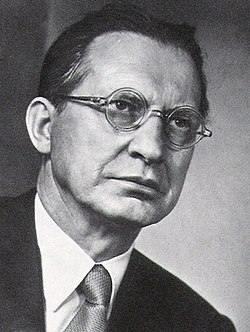| Office | Name | Party | Term |
|---|
| Prime Minister | Alcide De Gasperi | | DC | 13 July 1946–2 February 1947 |
|---|
| Minister of Foreign Affairs | Alcide De Gasperi (ad interim) | | DC | 13 July 1946–17 October 1946 |
|---|
| Pietro Nenni | | PSIUP | 18 October 1946–2 February 1947 |
| Minister of the Interior | Alcide De Gasperi (ad interim) | | DC | 13 July 1946–2 February 1947 |
|---|
| Minister of Italian Africa | Alcide De Gasperi (ad interim) | | DC | 13 July 1946–2 February 1947 |
|---|
| Minister of Grace and Justice | Fausto Gullo | | PCI | 13 July 1946–2 February 1947 |
|---|
| Minister of Finance | Mauro Scoccimarro | | PCI | 13 July 1946–2 February 1947 |
|---|
| Minister of Treasury | Epicarmo Corbino | | PLI | 13 July 1946–17 September 1946 |
|---|
| Giovanni Battista Bertone | | DC | 18 September 1946–2 February 1947 |
| Minister of War | Cipriano Facchinetti | | PRI | 13 July 1946–2 February 1947 |
|---|
| Minister of the Navy | Giuseppe Micheli | | DC | 13 July 1946–2 February 1947 |
|---|
| Minister of the Air Force | Mario Cingolani | | DC | 13 July 1946–2 February 1947 |
|---|
| Minister of Public Education | Guido Gonella | | DC | 13 July 1946–2 February 1947 |
|---|
| Minister of Public Works | Giuseppe Romita | | PSIUP | 13 July 1946–2 February 1947 |
|---|
| Minister of Agriculture and Forests | Antonio Segni | | DC | 13 July 1946–2 February 1947 |
|---|
| Minister of Transport | Giacomo Ferrari | | PCI | 13 July 1946–2 February 1947 |
|---|
| Minister of Post and Telecommunications | Mario Scelba | | DC | 13 July 1946–2 February 1947 |
|---|
| Minister of Industry and Commerce | Rodolfo Morandi | | PSIUP | 13 July 1946–2 February 1947 |
|---|
| Minister of Labour and Social Security | Ludovico D'Aragona | | PSIUP | 13 July 1946–2 February 1947 |
|---|
| Minister for Post-War Assistance | Emilio Sereni | | PCI | 13 July 1946–2 February 1947 |
|---|
| Minister of Foreign Trade | Pietro Campilli | | DC | 13 July 1946–2 February 1947 |
|---|
| Minister of Merchant Navy | Salvatore Aldisio | | DC | 13 July 1946–2 February 1947 |
|---|
| Minister without portfolio | Cino Macrelli | | PRI | 13 July 1946–2 February 1947 |
|---|
| Minister without portfolio (Constituent Assembly) | Pietro Nenni | | PSIUP | 13 July 1946–2 August 1946 |
|---|
|
| Secretary of the Council of Ministers | Paolo Cappa | | DC | 13 July 1946–2 February 1947 |
|---|

